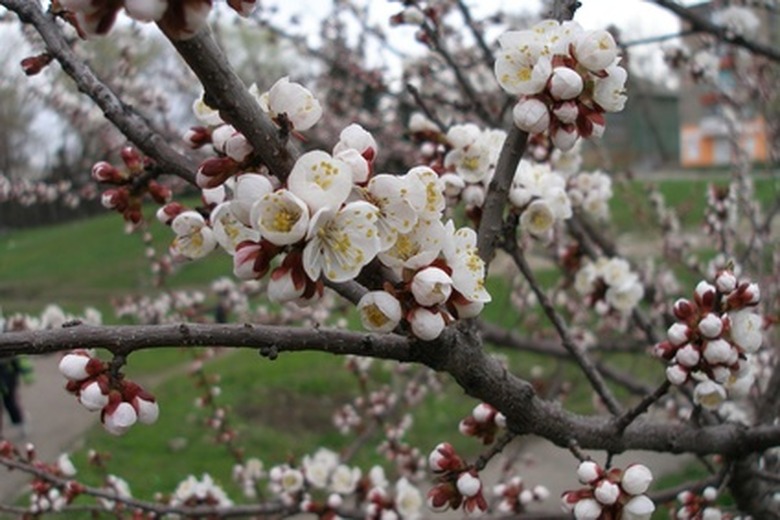How To Take Apricot Tree Cuttings
Apricot trees can best be replicated by the asexual propagation that cuttings provide. The trees rarely come true to their parentage by seed, so cuttings are the way to go to ensure replica tree DNA. According to North Dakota State University, apricot cuttings can be harvested in the fall when leaves remain on the tree or in the winter when the tree is in its dormancy. Cuttings should always be taken as close to planting time as possible and kept moist if there is any delay in planting.
Step 1
Cut a 6 to 9-inch long piece of tree branch roughly the diameter of a No. 2 pencil. Use clean, sharp secateurs and place the cuts on the bias making sure that each cutting has at least three or four leaf axils or buds.
- Apricot trees can best be replicated by the asexual propagation that cuttings provide.
- Use clean, sharp secateurs and place the cuts on the bias making sure that each cutting has at least three or four leaf axils or buds.
Step 2
Strip the leaves, if any, from the bottom half of the woody cutting, leaving the top foliage in place as a barometer of health.
Step 3
Wrap cuttings in damp paper toweling and place them in a resealable plastic bag to keep them moist if you cannot plant them immediately after harvest.
Step 4
Wet the trunk end of the cutting with water and dip into rooting hormone powder before sliding the bottom several inches into a nursery pot of wet, clean sand and peat moss.
Step 5
Keep apricot cuttings with leaves in partial shade and naked cuttings in full sun or partial shade. Keep the sand and peat moist at all times until the cutting produces growth in the spring.
Root Pecan Trees From Cuttings?
The art of using cuttings to produce a replica of the parent plant is a form of vegetative propagation. Rooting cuttings is a way for home gardeners to reproduce fine pecan varieties without mutation. Two types of cuttings can be taken from pecan trees for rooting: softwood or hardwood cuttings. Softwood cuttings are best taken in late spring or early summer from new growth. Test to see if you have true softwood. According to Miranda Smith in her 2007 book, "The Plant Propagator's Bible," bending branches at a 90-degree angle, 6 inches from the tip, will tell you whether you have softwood. " The two most important factors in rooting are noting when you take cuttings and the age of the tree. Take cuttings just before you plan to use them and carry a bucket or can with wet paper towels in it to keep the cuttings cool and moist. Cuttings can be wounded on the bottom 4 inches by removing small patches of the outer bark to allow rooting hormone to enter.
- Strip the leaves, if any, from the bottom half of the woody cutting, leaving the top foliage in place as a barometer of health.
- Two types of cuttings can be taken from pecan trees for rooting: softwood or hardwood cuttings.
Things Needed
- Clean, sharp secateurs
- Paper toweling
- Water
- Resealable plastic bag
- Rooting hormone powder
- Nursery pot
- Sand
- Peat moss
Tip
Take several more cuttings than you may want to become eventual trees in order to compensate for any failures to root.
